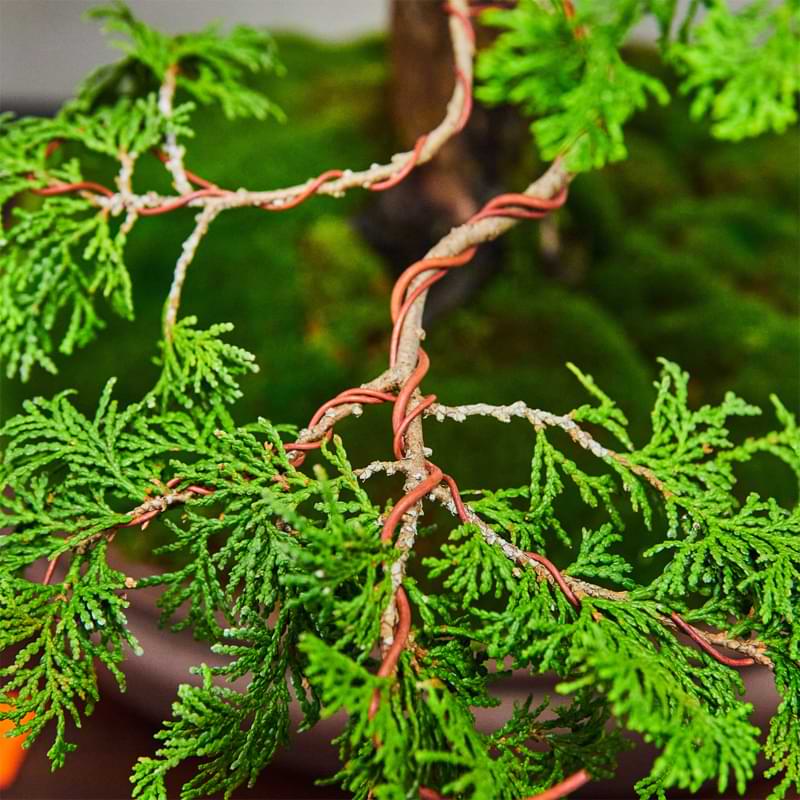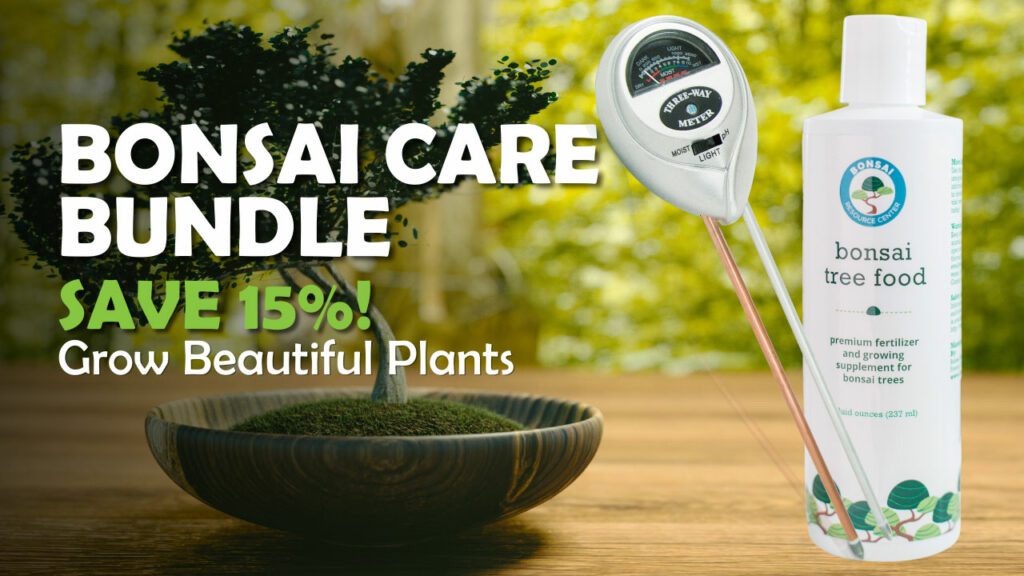How To Use The Best Bonsai Wire
A common misconception about Bonsai trees is that pruning will create the refined trunk shape and branch structure that enhances the natural element of any indoor or outdoor space. But the truth is that the best bonsai wire is an essential component in achieving the unique aesthetic these dwarfed potted plants are known for.
Why Wiring Bonsai Is Important
Bonsai wiring allows for precise control over the placement and positioning of each branch, enabling the grower to create intricate designs that mimic the graceful curves and stunning structure of matured trees in the wild. Without bonsai wire, you won’t achieve the unique aesthetics this ancient Japanese art form is known for.
What Is The Best Type of Bonsai Wire?
Anodized Aluminum Bonsai Wire
Pros:
- Ideal for deciduous plant species
- Maintains flexibility in varying climate conditions
- Easy to manipulate
- Great for beginners
Cons:
- May require repositioning as tree grows
If you are new to the bonsai world, anodized aluminum bonsai wire is a great place to start, as it allows for easy manipulation and is suitable for most types of deciduous trees, including but not limited to maple, elm, plum, ash, and beech trees. The softer wire also works well in varying weather conditions, making it great for homes or gardens with more prominent seasonal changes.
Choosing the correct thickness will be the most challenging part of using anodized aluminum bonsai wire. Fortunately, it is available in a variety of sizes ranging from 1mm to 8mm and can be cut and combined for longer lengths if needed. If you are a beginner, a good rule of thumb is to use a thickness 1/3rd the size of the branch or section you are wiring. So, if your branch is 3mm thick, use a 1mm thick wire.
When choosing the length of wire needed for each branch or section, it’s recommended to shoot for 1 1/2 times the size of the area being wired. It is essential to remember that the best bonsai wire is usually sold by weight rather than length, with heavier gauges offering less footage than lighter ones.
For example, 100g of 1mm bonsai wire will be about 155ft long. Conversely, 100g of 6mm wire will be approximately 4.2 feet long. The best bonsai wire spools are sold in weights ranging from 100g to 2.2 pounds, so you can always buy more than you think is needed to ensure you have enough to complete your desired design.


Copper Bonsai Wire
Pros:
- Ideal for conifers & pines
- Best for those who prefer using smaller gauge wire
- Stiffer wire that holds its shape more easily
- Can be more aesthetically pleasing than other options
Cons:
- Higher price point than other options
- May be challenging for beginners to work with
Experienced bonsai artists or those manipulating thicker, sturdier branches from conifer and pine tree varieties will find copper bonsai wire their best choice, and its higher price point is often considered a better investment considering the enhanced aesthetic and shape-holding ability.
Like the anodized aluminum option, copper wire comes in multiple thickness options but generally tends to run thinner than its more flexible counterpart. This unobtrusive quality is a major advantage, as it accommodates working with thinner wire without damaging their favored trees or sacrificing natural beauty for structure.
Length recommendations are also similar to its aluminum counterpart but may vary slightly as the less flexible nature of copper wire can require more to ensure the same tightness as other types. Do remember that because bonsai wire is sold by weight, you may end up with less footage compared to the same size wire in other materials, so keep this in mind when making purchases.
Methods of Wiring
Single Wiring
The single wiring method aims to create a smooth curve in the tree’s branches or trunk by using one wire to hold it in place. This is the most basic method and can be applied to any bonsai tree. This method is considered the easiest for beginners or those with trees that do not require a more complex wiring style.
Double Wiring
The double wiring method is similar to the single wiring method, using two wires side by side instead of one to create a more complex and intricate shape. This method is typically used for advanced bonsai styles such as windswept or literati.
Guy Wiring
Guy wiring is a more unconventional approach to shaping bonsai trees but can be highly effective in certain situations where the branches are too thick, brittle, or old to be wired traditionally. Instead of wrapping wire around the branch or trunk, 1mm bonsai wire is attached to the end of branches and secured to a protruding root, soil peg, or plant pot itself. This anchoring technique creates the desired shape without risking the integrity of the branch.
How To Wire A Bonsai
Step 1: Gather Tools & Equipment
Because bonsai wiring is a delicate process that shouldn’t be interrupted once it begins, it is best to gather all tools and materials beforehand, including:
- Bonsai tree
- Bonsai wire(s)
- Wire cutters or pliers
- Sharp pruning shears
- Root hook (for repotting)
- Stainless steel rake/spatula
- Protective gloves (recommended for beginners)
If your bonsai is still in its original container, you may also want to invest in a permanent pot and Bonsai soil. Be sure to transfer it to its new home before the wiring process so there’s no shock to the tree.
Step 2: Before You Begin Wiring
Before you start wiring your bonsai tree, make sure that it is healthy and ready for shaping. Prune any dead leaves, branches, or twigs off the tree beforehand.
Step 3: Where to Start
The single and double wiring methods always start at the same place: the trunk. Begin by securing the wire around the trunk area closest to the branch you plan to wire. The amount of wraps around the trunk will vary depending on the wire thickness and method applied, but generally, 1-2 wraps are a good starting point.
Once the wire is secured to the trunk, begin wrapping it around the branch in a spiral motion at a 45-degree angle. The direction of the wire should follow the growth of the branch and be wrapped with even spacing to avoid strangling growth.
This process needs to be repeated on every branch you want to shape, and remember that you may need to change up your wire size when getting to the smaller offshoots of larger branches.
Pro Tip: Never cross wires over each other as this can strangle the branches, leading to scared bark, branch breakage, and potentially death for the tree.
Step 4: Securing Wires
Excess wire at the end of a wrap should never be left hanging, as it can damage the tree or interfere with future growth. Instead, use a pair of pliers to twist the excess wire back onto itself, cut it down to size, and tuck it tightly under or next to the final wrap to secure it.
Step 5: Bending the Wired Branches
This step can be performed as you wire a bonsai or after you have wired all the branches.
The process of bending a branch is similar to wiring, with the added step of physically shaping the branch using your fingers or tools such as pliers. Gently bend the wired branch into the desired position, making sure not to apply too much pressure and risk breaking the branch.
If you are unsatisfied with the shape of a certain branch, consider using the double-wire method or a heavier gauge to reinforce the initial shape. This will also allow for greater control and precision in shaping the bonsai.
Bonsai Wiring Do’s & Don’ts
DO:
- Use high-quality copper or aluminum wires
- Start from the base of the branch and work upwards
- Wrap in an orderly and consistent manner, avoiding overlapping wires
- Make sure to secure excess wire properly
DON’T:
- Use low-quality, rusty wire, or plastic wire
- Wire too tightly, as it can damage the tree or restrict growth
- Leave excess wire hanging and unsecured
- Bend branches at sharp angles, which can cause breakage
- Cross or twist wires together or over each other, as it can result in uneven tension and damage the branch
Best Time To Wire A Bonsai
Root development and season determine the best time to wire a bonsai tree.
Deciduous trees like maples, elms, and hornbeams should usually be wired during their dormant period in late winter or early spring before buds form.
Coniferous trees such as pines and junipers react best when wired between late autumn and early winter.
Caring For A Bonsai After Wiring
Keep An Eye On Growth & Damage
Depending on the species you’ve wired, the branches will take about 1 to 4 months to fully set into their new position. If you notice the wire cutting into the tree or causing damage, remove it immediately and rewire it if necessary.
Remove The Wire As Needed
By late spring or early summer, the wires should be removed. The process will vary depending on your wiring style and tree species, but generally you should:
- Gently unwind and remove the wire in the opposite direction it was applied
- Be careful not to damage any new growth or bark while removing the wire
- Use wire cutters for thicker wires that may be difficult to unwind
It is important to note that bonsai wire cannot and should not be reused for other trees, but you may be able to repurpose it for other house plant maintenance, like securing trellises or plant stakes.
Maintain Tree Health With The Best Bonsai Growing Supplies
Like any other houseplant, the bonsai requires proper nutrients and care for optimal growth. Be sure to choose premium products designed explicitly for bonsai, such as specially formulated fertilizers and pruning shears. Investing in a root supplement that increases the tree’s ability to absorb and utilize nutrients for optimal, verdant growth may also be a good idea.
Best Bonsai Wire FAQ
1. What can be used instead of bonsai wire?
You should never use anything other than the best bonsai wire to shape your tree. Other materials may cause damage or be too weak to hold the branches in place properly.
2. When do I remove bonsai wire?
Generally, bonsai wire should be removed in late spring or early summer after the branches have set into their new position. However, if you notice that the wire is inhibiting growth, scarring the bark, or causing discomfort to the tree, it should be removed immediately and rewired.
Enjoy The Art Of Bonsai
With the best bonsai wire, you can create beautiful shapes and designs with your tree, allowing you to express your creativity and appreciate the artistry of this unique plant care practice. With patience and adherence to proper techniques, you’ll have a stunning bonsai in no time.
Join our Facebook community of fellow bonsai enthusiasts to learn more and share your own tips and experiences. And don’t forget to subscribe to our newsletter for special discounts in our Bonsai Plant Care Shop, as well as expert advice to ensure the health and vitality of your bonsai tree. Happy wiring!






